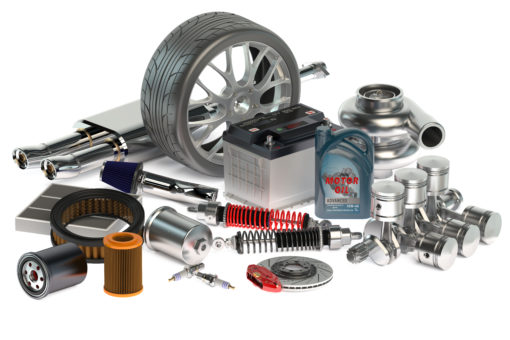
Fun Rover
October 8, 2021
Search
Popular Articles
8 Almost Useless Land Rover Mods
11th June 2014
Updated: What Makes a Defender Iconic?
29th November 2011
According to a recent study, the average age of roadworthy cars has increased to 12.1 years this year from 11.9 in 2020. Granted that it’s been rising for the past 20 years, the pandemic has made this year more apparent. Most Americans can’t afford to buy a brand new car right now, as their focus shifts to weathering the health crisis. (1)
Keeping old cars roadworthy will require some change of parts. Most car models undergo a major redesign every four to six years (with minor upgrades happening every three years), so auto parts and accessories tend to go obsolete quickly. Fortunately, the market’s rife with Original Equipment Manufacturer (OEM) and aftermarket parts.
But before embarking on costly car modifications, it pays to ask yourself some hard questions. There’s more to slapping on a brand new Land Rover exhaust or oil filter than you may think.

Car parts laid out
Is the part showing its age?
Whether it starts feeling sluggish or makes strange sounds when driving, a car has plenty of ways to say that it’s no longer at its prime. Paying close attention to these signs helps you take decisive action and become less of a liability on the road.
Take brakes, for example. Do they let out an excruciating screech every time you come to a halt? Does the pedal shake, especially when coming to a sudden stop? Has the car’s stopping distance been too close for comfort lately? If it’s a unanimous yes, consider swapping your old brakes out for performance brake kits.
Is changing the part cost-effective?
A car has plenty of working parts, but not all of them will be cheap to swap out. A rule of thumb is to set the overall cost limit at 50% of the car’s estimated resale value. So, if swapping out parts of your 1991 Range Rover Classic will cost over USD$800 (its highest estimated resale value is at USD$ 1,600), it might be better to invest in a new one instead. (2)
Also, don’t underestimate the price of replacements. Just a single part can render the entire endeavor cost-inefficient. Here are some parts and the highest average cost to replace them:
- Fuel injector – USD$ 500
- Catalytic converter – USD$ 1,500
- Camshaft – USD$ 3,000
- Transmission – USD$ 5,000
- Engine – don’t ask, just get a new car
(3)
Does the part get replaced often?
For the record, the frequency of replacing car parts is more often measured in miles than in years. If you drive more than 10,000 miles every year, the need to replace car parts will come more frequently than you may imagine. The overall cost per mile goes down the more miles driven annually.
Below are several car parts that need frequent replacement. Some are affordable, while others can be quite a hefty investment.
- Alternator
- Air filter
- Battery
- Fuel and water pump
- Spark plugs
- Timing belt
- Wiper blades
(4)
Are you going off-road?
Naturally, this question only applies to off-road-capable vehicle owners. While SUVs and pickup trucks typically fit the bill, it’s common for some owners to modify their sedans or wagons for tackling non-paved terrain. Either way, offroading will demand plenty of changes, auto parts included. In this case, it’s best to carefully think if you really want to modify your old car.
Among the most important aspects that require modifications are the tires, axle, and suspension. Bigger tires with off-road-capable treads help maintain traction, the axle ensures stability while traversing rough terrain, and an adjustable suspension raises the vehicle enough to clear hurdles. The rougher the trail, the more drastic the modifications will be.
Will you be using it for years to come?
The last question on this list is relatively a no-brainer. The main purpose of changing car parts is to keep your old ride running for as long as possible. While selling the car off is another logical reason, people will stick to their cars for a bit longer, given the earlier explanation.
The good news is that automotive technology has grown more reliable over the decades. With proper maintenance, today’s models can last virtually indefinitely. Outdated parts being pulled out of the shelves have become less of an issue with the proliferation of OEM and aftermarket variants.
Conclusion
Updating the parts on older cars certainly have their economic benefits, provided that it doesn’t cost half as much as their current value. Even as the world slowly returns to normalcy, it’ll take time before people can safely invest in brand new vehicles. If you’re looking to keep your aging car driveable, take these questions to heart.
Sources:
- “Average Age of Cars and Light Trucks in the U.S. Rises to 12.1 years, Accelerated by COVID-19, According to IHS Markit,” https://news.ihsmarkit.com/prviewer/release_only/id/4759502/
- “Should You Buy A New Car Or Keep The Old One Running?” https://www.motor1.com/features/178071/keep-car-or-buy-new/
- “Are Your Car Repairs Too Expensive? Sell It, Instead!” https://carbrain.com/blog/15-damaged-auto-parts-that-will-really-cost-you
- “12 car parts you need to replace more often,” https://www.centennialcollege.ca/school-of-transportation-blog/2019/september/12/12-car-parts-you-need-to-replace-more-often/
About Us
FunRover is a place for Land Rover enthusiasts to gather as a community and discuss the best 4x4 vehicles ever produced. We're building a library of high quality resources & articles to help owners along in their Land Rover ownership.
Popular Posts
8 Almost Useless Land Rover Mods
11th June 2014
Updated: What Makes a Defender Iconic?
29th November 2011
How to Plastidip your Land Rover Defender
19th August 2014





